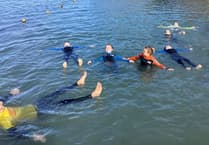A CONSERVATIONIST has been appointed to lead a project exploring the habitats and wildlife that depends on them in the area around Burrator Reservoir.
Deborah Deveney has been chosen by the South West Lakes Trust (SWLT) to run a two-year project exploring the habitats and species in the 2,500 hectares of land around the reservoir on Dartmoor.
The results from this investigation will be used by the trust, which manages the land on behalf of South West Water (SWW), to decide with SWW how to look after the land to boost biodiversity, improve water quality and make the area resilient to climate change.
Deborah, who has worked on various farmland conservation projects across Devon, says she is really looking forward to putting on her walking boots and getting out to discover her new ‘patch’.
The catchment around Burrator managed by the SWLT supports a fantastic mosaic of habitats, from wet woodlands, conifer plantations and open moorland to fragments of upland heath and wet mires.
It is also home to a wide variety of wildlife dependent on these habitats. The project aims to establish how those habitats are faring and work out how best to look after them in future, working with local stakeholders and wildlife recorders in the area to undertake species surveys.
Getting off to a good start in the fine weather in in May, Deborah and SWLT ecologist Emma Scotney ventured out into the catchment to record birds, butterflies, dragonflies and damselflies.
They were rewarded with the evocative song of the cuckoo, the churring of a nightjar, sightings of rare butterflies such as the marsh fritillary and green hairstreak along with good numbers of large red damselfly, beautiful demoiselle, four spotted chaser and keeled skimmer.
Vegetation and species will be recorded throughout the project to build up a picture of what wildlife the area currently supports to guide any future management recommendations.
As Burrator Reservoir supplies drinking water to the residents of Plymouth, Tavistock and other towns and villages around the South Hams, protecting this drinking water supply is a fundamental part of the project.
However South West Water also intends to maximise the wildlife value of the area around the reservoir and maintain it for the enjoyoment of people from the area and visitors for years to come.




